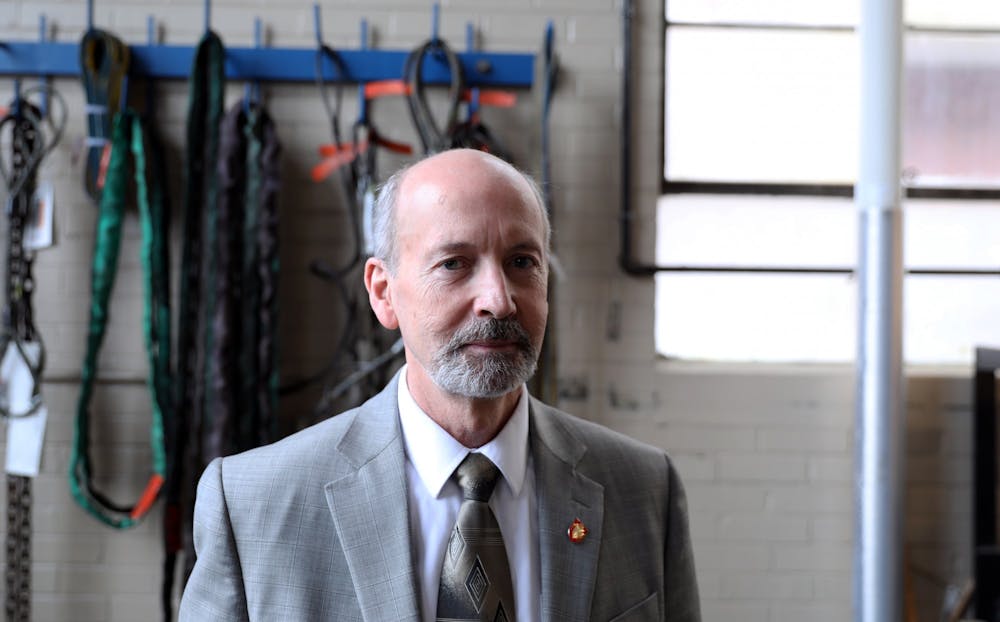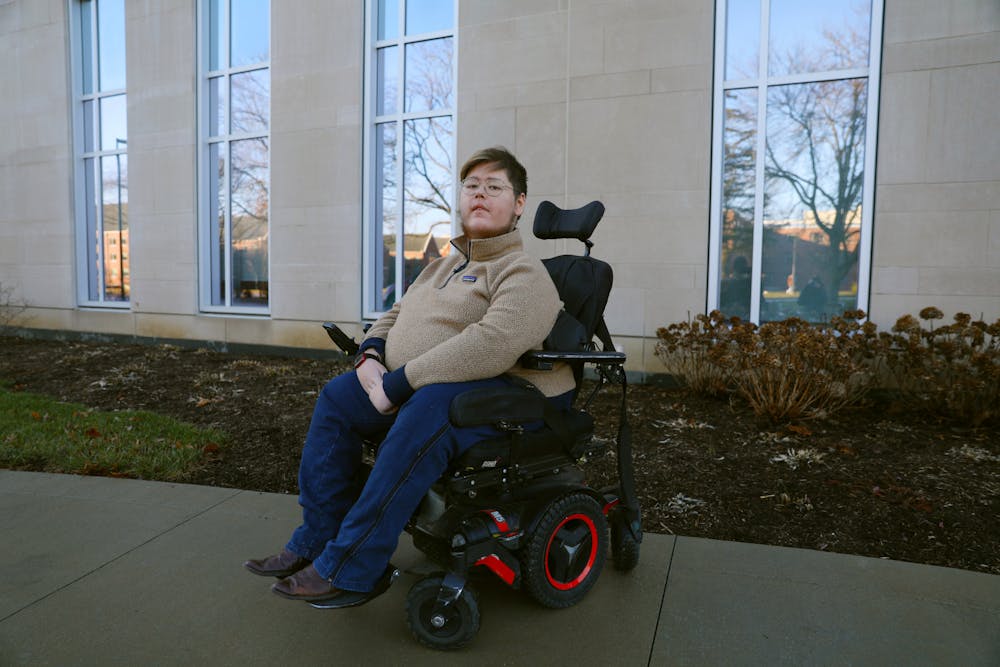When deciding what university to go to, James Nichols, a wheelchair user, had an easy choice.
He considered Purdue University, Wabash College and Indiana University, along with Ball State University. In the end, he chose Ball State for a simple reason: accessibility.
“Accessible means a person with a disability is afforded the opportunity to acquire the same information, engage in the same interactions and enjoy the same services as a person without a disability in an equally effective and equally integrated manner, with substantially equivalent ease of use,” according to the North Carolina State University’s Disability Resource Office website. “The person with a disability must be able to obtain the information as fully, equally and independently as a person without a disability.”
Ball State ranked in the top 10 of “wheelchair friendly colleges” in the Wheels on Campus edition of New Mobility magazine.
“None of those campuses are as successful as Ball State [in accessibility],” Nichols said. “So, it's one of the things that I fell in love with [at] the school.”
Nichols, second-year social work student, noted what made Ball State different compared to other universities was that each building on campus has at least one wheelchair accessible entrance, and each building has at least one handicap door-opener button.
When he toured Purdue, he noticed some buildings didn’t follow the Americans with Disabilities Act (ADA) due to them being filed as “historic.” If making a historic property accessible could “threaten or destroy the historic significance of the building or facility,” then the historic property becomes as accessible as possible within the conditions, according to the ADA website.
The ADA “is a federal civil rights law that prohibits discrimination against people with disabilities in everyday activities,” according to the ADA website.
The ADA was originally passed July 1990, according to the ADA website, but Ball State’s Office of Disability Services and Facilities were already making Ball State accessible, said Richard Harris, who started the Office of Disability Services.
James Lowe, associate vice president for facilities planning and management, said he started his position in December 1987, where he joined Harris.
“I learned quickly that Ball State had a lot of great things moving forward with accessibility, whether that be physical barriers or other barriers,” Lowe said.
In 1973, Vice President of Student Affairs Jack Beyerl asked Harris, who at the time was serving as the director of freshmen orientation, to form an ad hoc committee, a temporary committee, to help students with disabilities, Harris said.
Prior to this committee, Ball State employees and students were working on accessibility, Harris said. A woman in the Counseling Center would order taped versions of books for visually impaired students. Going further back to the 1920s, members of the football team would carry a student using a wheelchair up the stairs to go to and from classes, according to an article titled, “The 4 P’s of Accessibility in Post-Secondary Education,” by Leah J. Vickery and Michael D. McClure.

Courtney Jarrett, director of the Office of Disability Services, said she’s “keeping the dream alive” from what Harris started. Because of Harris’ work, Ball State is known to be physically accessible, Jarrett said.
What makes Ball State unique in handling accessibility is the collaboration between departments, both Lowe and Jarrett said.
The Office of Disability Services currently only has three employees, which is new for them this year. Starting in the 1990s, there were only two employees.
“There's no way that we could do all the things that need to get done accessibility-wise if it was just the three of us,” Jarrett said. “So — luckily — I have friends all over campus that I can call in facilities and housing, in dining, in academic affairs, in orientation and the Counseling Center, the Career Center — all of those places that if a student has an issue or needs an accommodation, that I know it's going to get put in place.”
The small staffing in the Office of Disability Services is another unique attribute to Ball State. Typically, universities have ADA coordinators who oversee all accessibility on campus for everyone, but Ball State doesn’t.
The Office of Disability Services oversees students’ accessibility; faculty and staff accessibility is overseen by human resources. The office also oversees visitors’ accessibility needs, Jarrett said. The office of three manages many students compared to how many students they should be serving per professional staff person.
“Our national organization does research about staffing and how many students per professional staff there should be,” Jarrett said. “And for a college our size, it's supposed to be one professional staff person to like 200 students, and we're serving like 3,500, so we're more at like 1,000 each, a little bit more than that.”
Even though Ball State is a leader in physically accessible schools, Jarrett and Lowe are always focused on improving the campus.
“I wanted to learn more,” Lowe said. “I went out with [the Office of Disability Services] students, and I walked the campus. So, somebody might have been visually impaired … or somebody might have been in a wheelchair. Believe me, you learn quickly what they have in the way of challenges if you don't remove those physical barriers.”
One thing Lowe removed to help students navigate campus was the bollards from the sidewalks. Bollards were used to help keep cars off the sidewalks.
“Little did we know that was a very physical problem for those who use a cane because if they don't cross that or find that bollard, they could literally walk into it,” he said.
A future improvement Nichols, Jarrett and Lowe are looking forward to is the renovations to the Arts and Communications (AC) Building, specifically the chair lift being changed.
Jarrett describes the lift like “those commercials [of] old ladies riding upstairs in those chairs.” She notes that while it’s accessible, in her opinion, it’s horrible.
AC was built in 1955, and like many other older buildings on campus, Lowe said it’s a complicated fix due to its age. Since the lift is built into the steps, there needs to be a physical reconstruction done to fix it. Lowe said facilities are planning on renovating AC in the summer of 2023.
The improvements Jarrett and Lowe push for are meant to help those who come to Ball State, whether they are students, faculty, staff or visitors.
“Independence is one thing that I really strive for,” Nichols said. “And so knowing that I can go to any building on campus and get in because there is some type of accessible entrance … is really helpful.”
For more information contact the Office of Disability Services by their website.
Contact Hannah Amos with comments at hannah.amos@bsu.edu or on Twitter @Hannah_Amos_394.





